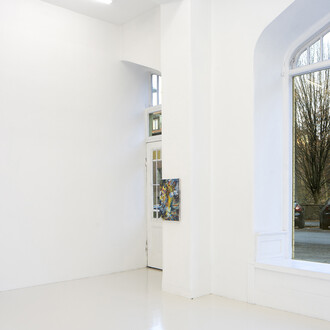How do we understand the relationship between life and technology in a time when they seem to be completely merged? The group show “Mud Muses – A Rant About Technology” takes its title from an installation by Robert Rauschenberg and an essay by science fiction writer Ursula K. Le Guin. Meet 19 artists and artists groups who manipulate and play with (gender)codes, flip subjectivities, hook up with other intelligences and short circuit the promises of technology.
In the 1960s the aim was to integrate technology with everyday life: in 2019 that unification seems realised and complete. Perhaps it will be by travelling through history and the imagination that we can trace the differences between life, art, and technology? In Robert Rauschenberg’s fifty-year-old artwork “Mud Muse” (1968–1971) sonic vibrations create random bubbles in a large, open, vat filled with synthetic sludge. Here our encounter with technology becomes both sticky and confusing. What a Mud Muse actually is remains uncertain, but the installation makes one thing clear: technology is a notion that creates time and space and thus influences our sense of reality.
The theme of art and technology is a cornerstone for Moderna Museet. Several important exhibitions about the human and the machine were held in the museum’s founding years – such as “Movement in Art” (1961), the Tatlin exhibition (1968), “Ararat” (1976) – and the museum itself was conceived as an information centre and transmission station of sorts, an early example of how society is remade in the image of technology. “Mud Muses” revisits but also departs from this history in a journey through important transformations which the theme has undergone since the 1960s, and offers new interpretations of its historic and cultural backgrounds.
Is technology the human interface with the material world? In her text “A Rant About Technology” (2004), Ursula K. Le Guin uncouples technology from common sense and progress. She writes, “Technology is the active human interface with the material world.” This simple definition expands the idea of technology and ensures that it doesn’t only belong to ‘advanced’ cultures or at our end of history. But how does ‘the material world’ act in this equation? And how does technology’s ‘active interface’ affect humans and their society?















